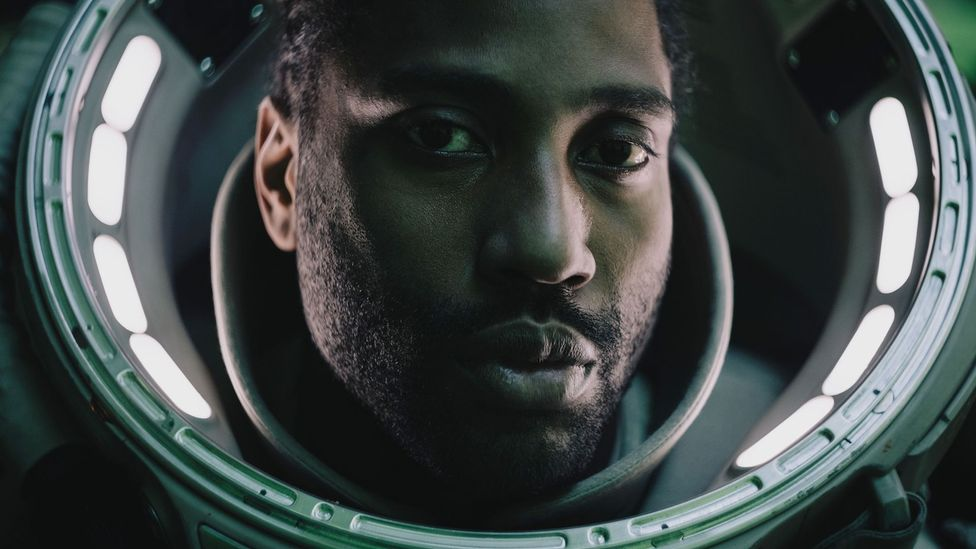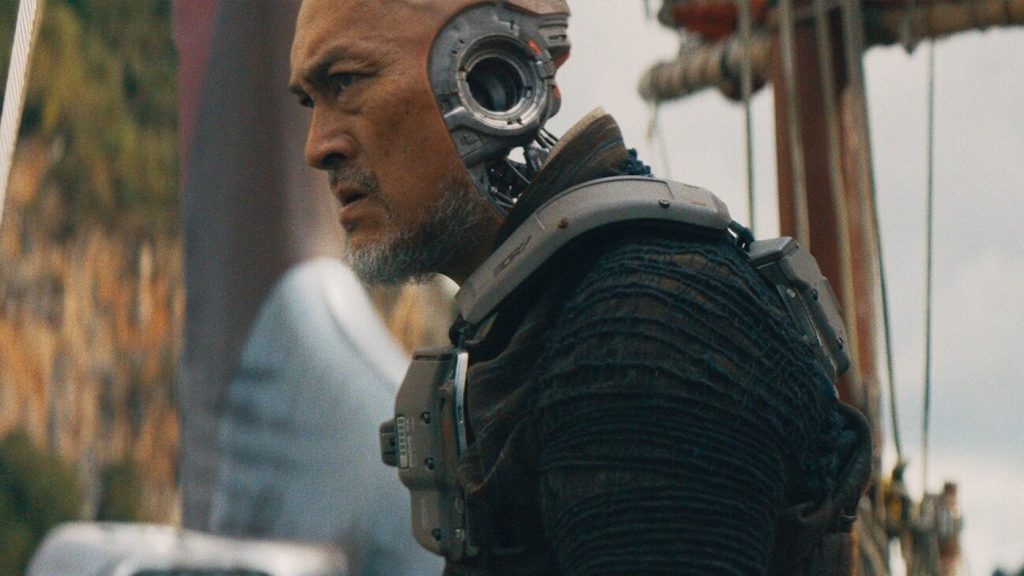You’d be forgiven for not having Gareth Edwards’ The Creator on your release radar, even if you’re a fan of cinematic science fiction. Despite its $80 million price tag (actually a pretty modest sum for a blockbuster of this scope), the film was practically dumped into theatres with almost no fanfare or promotion. Surprise, surprise, it bombed. That lack of promotion or faith on the studio’s part is sadly to be expected—but the pure thrill that The Creator provides shows just how mistaken their attitude is. Daring, original SF on such a vast scale has the potential to be engrossing and awe-inspiring like nothing else. The Creator doesn’t quite get there—it exceeds its own grasp a little too much for that—but it’s close enough to whet one’s appetite for more projects like this instead of just another pointless Star Wars spinoff.
The premise is an intriguing mixture of concepts, even if none of them are particularly original. AI, developed by the US for manual labour, apparently goes rogue and nukes Los Angeles. A War-on-Terror-like campaign to eradicate AI throughout the globe follows, led by a boss-looking orbital bomber, the USS NOMAD. Our hero (John David Washington), who naturally lost his family in the bombing, is sent by the military to infiltrate ‘New Asia,’ the last state still openly harbouring AI. He falls in love with the daughter of Nirmata (Gemma Chan), the titular ‘Creator’ revered by the AI as a messiah of sorts. Several twists follow, most of which you’ll be able to predict if you’ve seen enough movies, though I won’t spoil them here. Suffice it to say, there are few truly shocking (or even ‘whoa’-inducing) surprises here—the joy lies mainly in the execution.

Not since Denis Villeneuve’s Dune has a work of big-screen SF looked this good. The NOMAD looks amazing, halfway between that planetary gate in Rogue One—also directed by Edwards—and the mothership from Independence Day. Edwards claims it took hundreds of drafts to finalize the design, but evidently, it was worth it. The film’s vistas are also refreshingly tactile and alive, avoiding the flat green screen or StageCraft look that’s crept in everywhere since the Star Wars prequels pioneered the technology. Sure, New Asia is a confusing cultural jumble: all the writing is in Japanese characters, yet the location is clearly Thai or Vietnamese, suggesting this might be an alternate world where World War II went the wrong way. But still, the sight of futuristic robots mixed with rice paddies and water buffalo is undeniably visually arresting. Even the obligatory Blade Runner-esque megacity draws enough from the real Bangkok to look satisfyingly distinct.
Okay, this is where things get a little choppy. Yeah, it’s about the characters. Besides the protagonists’ throughline—the emotional beats of which are generally well-done—hardly any of the other players are worth caring about. This is true even despite a stacked ensemble. Allison Janney as a hawkish colonel is inspired casting, yet she never gets any more depth than a standard straw villain. Ken Watanabe, apparently a must for any vaguely Asian Hollywood pic, is taciturn and steely as usual, but his android militiaman is mostly relegated to exposition duty. Others like Sturgill Simpson, Ralph Ineson, and Veronica Ngo don’t even have time to make an impression. That’s even more frustrating than it sounds because the film makes me want to know more about them and how they fit into this world. Yet Edwards is so laser-focused on Washington and Chan’s arc that he clearly can’t be bothered with developing anyone else except in relation to them, diluting the whole story’s believability.

That’s a problem with the worldbuilding, too. As I said, the film’s world is pretty unique and filled with potential, but its lack of interest in providing key details reduces it to merely a cool-looking background for the main action. For instance, what’s the difference between the android Simulants and the mechanical-looking Bots,? What does New Asia get out of protecting Nirmata and the AI, especially when it regularly makes the US carpet-bomb their cities? How does the US get away with openly massacring civilians in a country they’re supposedly not at war with? These could all have the potential to yield interesting answers and much-needed development for the side characters they affect… if The Creator cared enough to engage with them. It’s a clear sign of the sloppiness on display here that a game-changing revelation about the LA bombing (an essential part of the setting) is tossed out as an afterthought in the middle of an unrelated speech by Watanabe.
Yet, for all that griping, I do wholeheartedly recommend The Creator. The worldbuilding may be ultimately shallow, but discovering each new setting feels like a delightful treat. The story beats may be predictable, but they are all faultlessly entertaining in an old-fashioned movie way. Big-budget original SF may have a reputation for bombing, but that’s as much a self-fulfilling prophecy as anything. Remember that Blade Runner failed at the box office way back when only to become a massive cult hit as soon as a director’s cut came to home video. Finally and perhaps most importantly, The Creator’s main character arc may crowd out everything else, but it’s genuinely moving, especially toward the end. The climax definitely had some of my fellow audience members teary-eyed—not this reviewer, of course, having long since inured himself to even the most manipulative Pixar movies. I did have a little something in my eye, though. Don’t tell anyone.
